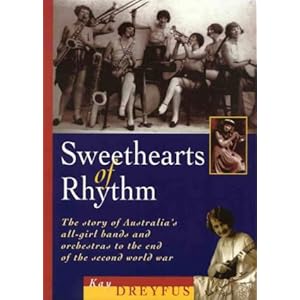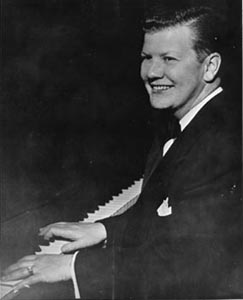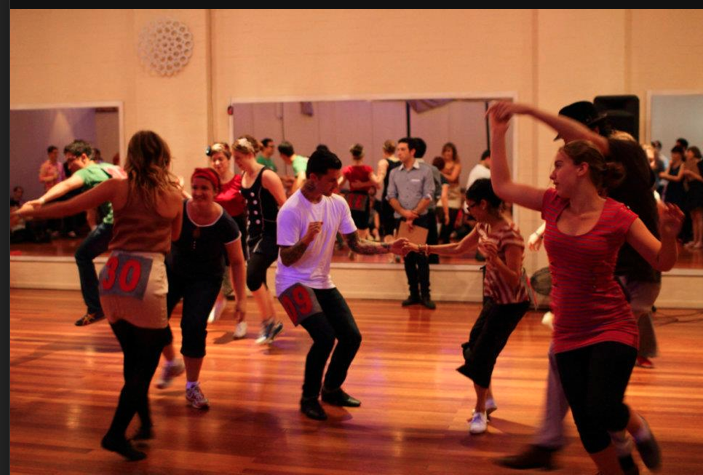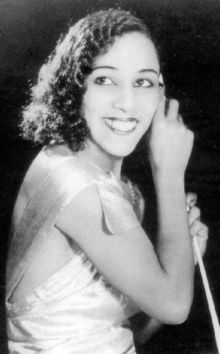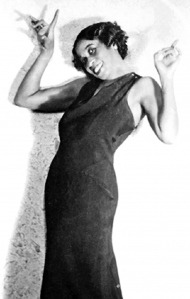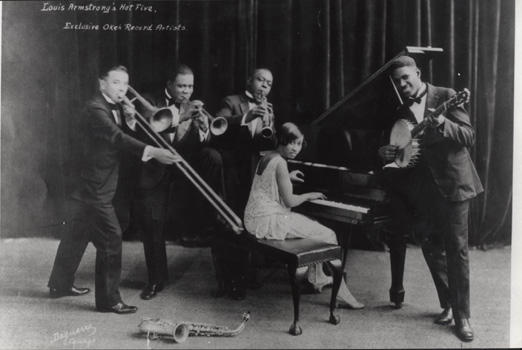In a post on FB, Chris asks
Charm’s Question of the 1st of June:
Blues dance draws from a rich cultural well, a constant evolution of the dance and rapid socio-economic changes.What elements of vintage Blues dance culture (sordid and scandalous though they may be) need to be incorporated into the modern dance form while coupled with more professional dance training?
Disappointingly, I think I’m more interested in children’s rhyming songs, skipping ropes and household chores.
I read this as I was writing that last post The Rules of Connection: I think about pedagogy, lindy hop and ideology, so I ended up replying to Chris with this fairly off-topic and annoyingly preachy comment:
I have some troubles with the way ‘professional dance training’ is often defined or practiced.
I don’t accept the premise of this question: that ‘professional dance training’ (as it is defined and practiced in most of the modern swing/blues/whatevs world) is an integral part of blues dancing or learning to dance. I’d probably ask ‘how might dance pedagogy and learning dance (the two are not necessarily codependent) today draw on the history of blues dance (and music)?’ or, in SamTalk: “What can I use from the history of blues dance to become a moar orsm dancer?”I’m actually very interested in dance as a point on continuum of everyday rhythmic movement, rooted in history and culture (which I think dance is often separated from by ‘professional dance training’).
So I like to chase down ideas about moving your body in rhythmic ways which aren’t necessarily dancing. It’s about training your brain and training your body.
eg I think this video is a good tool for thinking about and physically learning about rhythm, swing, delay, etc: http://youtu.be/2vy0dMXhlWI
This one for thinking about rhythm, timing and performance: http://vimeo.com/20853149
Or this one for ideas about rhythm, partnership and athleticism: http://youtu.be/bDOBcBKRENw
It’s an interesting question, because it’s actually asking (I think):
How can we use history (of blues dance and music) in modern teaching practice?
Which is almost exactly the question I ended up asking in that last post (The Rules of Connection: I think about pedagogy, lindy hop and ideology). How do we use history in modern dance teaching? This is something I’ve written heaps about. Heaps and heaps. I’ve gotten angry about the way some dancers and teachers insist on male/female partnerships because ‘that’s how it was in the old days’ (yes, there were male/female partnerships in the old days, but ALSO LOTS OF SAME SEX PARTNERSHIPS). I’ve gotten angry about dancers and teachers insisting that we should wear vintage clothing (shoes, dresses, suits, whatEver) because ‘that’s how it was in the olden days’ and ‘it makes you dance more better’. My standard response, at a higher level is ‘I can dig historical stuff, but I don’t want to recreate all of the history. I like having access to a good doctor, a dentist, clean drinking water, the right to own property and fucking awesome running shoes.
So I reckon we can assume that ‘just recreating’ the past isn’t really what we want to do. Well, it’s not what I want to do. That last post began to explore how I think about using history in teaching actual dance movements: I am unsure and still figuring things out.
As a dancer myself, I use historic photos, stories, footage and music to help me think about how to move my body, and what my body looks like.
- In Things I want to talk about: #dance I mentioned the way I use historical dance to empower me, as a woman dancer.
- I’ve started thinking about costume (specifically wearing menswear, as a woman) lately in posts like Totes dandy worthy, right? (helped along by fellow dandy-philes and peeps like lindy shopper who did this sweet post How to be a lady dandy).
- I talked about learning solo dance as empowering in I vant to be alone.
- And I found the Women’s History Month posts from 2011 very exciting, because they gave me a chance to focus on women dancers through history, finding excellent role models, but also excellent examples of different types of dancing bodies to learn from.
- And then I’m really into copying male dancers (like Al Minns or Frankie Manning) as a way of playing with gender as a woman.
- I’m also 100% into learning historic solo jazz routines, not only to develop my dancing skills, but also to furnish me with a wider, more historically grounded repertoire of moves. And these moves, of course, teach me how to move, and how to think about movement in more sophisticated ways. Mostly because, those olden days dancers? They were fucking hardcore, and everything we do today is pissweak in comparison.
In all these examples, historical footage, photos and stories are really important to how I think about learning to dance, how I think about choreography, how I think about music and how I think about getting DOWN on the dance floor. I can borrow from history (textual poaching, yo!), but I don’t have to seek to recreate it exactly.
So in that response to Chris’s question on FB, I wanted to side-step a discussion of formal teaching processes by referring to LeeEllen Friedland’s discussion of a continuum of cultural practice.
I can’t find a copy of her article online, so I had to look it up in my thesis notes. This is what I wrote about learning to dance in vernacular dance cultures:
In vernacular dance culture, acquiring dance knowledge and learning to dance, developing “new steps” and becoming conversant with dance floor politics is not a formal process conducted in dance studios, but a matter of acquiring life skills particular to a community. Sheenagh Pietrobruno argues that vernacular dance is created in a “lived context”, and is:
not formally learned but…passed on from generation to generation. Most people who grow up with the dance acquire it in childhood, its movements often taught indirectly through the corporeal language of the body, so that those raised with the dance may not have a sense that they have learned it. Dancing usually is done to music: there is no separation between the rhythm of the music and the steps of the dance (1).
Pietrobruno’s discussion of salsa is equally relevant to a discussion of African American vernacular dance, particularly as salsa – as a Cuban-identified dance – has strong cultural links with African American dance, as do many other vernacular dances of the Americas.
Pietrobruno introduces her discussion of teaching and learning salsa in Montreal by emphasising the position of vernacular dance within the everyday, and learning to dance as an everyday activity, rather than a ‘special’ event bracketed off into designated dance spaces. In this way vernacular dance across cultures is bound to live music and other vernacular cultural practice, it is communicated across generations and it is an extension of ‘wider cultural expression’:
The salsa that develops in a lived context involves more than a series of steps and turns: dancers execute movements with their entire bodies. The subtle, but essential elements of the dance, such as how dancers hold their bodies, move their heads, position their hands and isolate various body parts are rooted in motor control and movements that are extensions of wider cultural expression…A child may be formally taught specific footwork and turn patterns of salsa, but picks up body isolations by experiencing the family dance culture, similar to acquiring everyday gestures. Although these subtle separations of parts of the body may seem effortless to the outside viewer, their performance involves a great deal of skill and dexterity. Individuals of Latin descent, who are dispersed throughout the Americas, often learn the dance as an extension of their heritage (1).
Learning to dance in a vernacular dance culture is a process akin to learning to speak. Children acquire ‘vocabulary’ – dance moves – through imitating adults, through play, and everyday activities. The process of gaining discursive proficiency requires constant and everyday experiments with communication. Families, peers, and other groups and individuals in day to day life contribute to a child’s acquisition of dance skills.
Friedland explores the acquisition of dance skills in vernacular dance culture in greater depth in her article “Social Commentary in African-American Movement Performance”, where she discusses the role of dance in urban black children’s lives in Philadelphia. Though researched in the 1970s and 80s, Friedland’s work is as applicable to communities of dancers in the 1930s in Harlem as it is to black dance culture in Los Angeles today. Friedland makes several key points in her work. Firstly, and most importantly, she states that dance in African American communities is not segregated from everyday activity. Dance movement itself is part of a “complex of interrelated communicative and expressive systems that constitute a whole world of artistic performance” (138). These systems include body movement, sound (including music), visual forms (including drawing and wall art, costume and hair style), language (including slang, rap and poetry) and ‘attitude’ (including ethics, creativity, aesthetics and social behaviour). Participating in all these systems is central to black children’s lives, Friedland argues, and is, it is implied, equally as important to black adults.
This continuum of creative cultural practice, and the continuity of themes and interpretive and creative practices across media and practices is reflected in the cultural practices of contemporary swing dance communities. Study of contemporary swing dance culture suggests that the older a community, the more varied its inter-community networks, the more diverse its borrowing from other cultures, the more sophisticated its own cultural practices and shared systems of meaning. This point has directed my attention towards DJing, audio-visual media and dance pedagogy in contemporary swing dance culture, as an exploration of the ideological relationships between cultural practices and media use in a particular community. As Friedland suggests, systems of meaning in dance are not discrete. They are constructed intertextually, echoing broader ideological and discursive structures within that community.
It is therefore unsurprising to find vernacular dance, as part of a system of cultural practices connected by ideology and social networks, is not only ‘performed’ on stages, but also in competitions or even on the dance floors of balls or social dances. Friedland makes her second, and perhaps most important point, that dance and dance movement are part of everyday life and movement in vernacular dance, and that dance carries with it social and cultural meanings and relationships. Both Friedland and Pietrobruno therefore argue that ways of dancing are extensions of cultural ways of being. Friedland in particular extends Pietrobruno’s point that dance “movements …are extensions of wider cultural expression” (Pietrobruno 1). The discussion of dance movement as a subclass or an extension of the notion of ‘dancing’ in Friedland’s work encourages us to expand our conception of ‘dance’. Movement – ‘body language’ – is not simply a visual illustration of spoken language. Dance and rhythmic movement are part of a wider system of cultural production and communication as viable discourse and communication in themselves.
Dance and rhythmic movement are therefore as important in the African American culture Friedland describes as spoken and written language is in mainstream Australian culture. She discusses a range of categories of dance movement, from ‘being rhythmic’, to ‘dancing’ and ‘movement play’. These categories are seen as testing grounds for children’s developing ‘dance’ or ‘movement’ repertoire, and concurrently, their social and cultural repertoires. Friedland discusses black children’s ‘learning to dance’ as a process of enculturation, where children are not only taught formal steps from older children and adults, but also encouraged to move in particular ways, and to read the movements of others on particular terms. This approach encourages us to think of dance and movement not as innate or essential abilities, but as learned cultural expressions.
The mythic association of African Americans with ‘natural rhythm’ and expressions like ‘white men can’t jump’ (as discussed in Jade Boyd’s article “Dance, Culture, and Popular Film: Considering Representations in Save the Last Dance”) are reframed by Friedland’s work as racialised, essentialist statements about ethnic identity and culture. Dance discourse and ways of moving are learnt rather than innate. They are culturally determined. With this in mind, we can draw on a range of dance studies literature to make observations about how dance movement and dance culture cross-culturally function as discourse.
So, with all that in mind, I figure that to really understand blues and lindy hop and all those historical dances, you really have to think about everyday cultural context. As a white, middle class woman living in Sydney in the 21st century, I’m never going to be able to truly recreate those original cultural conditions. And it’s a bit silly to try, as I don’t want to, not even if it meant becoming a brilliant dancer. But it does mean that I’m very interested in childrens’ games and videos like Stop Clap Go:
I’m also interested in adaptations of children’s games like doubledutch in a postcolonial/multicultural/disapora context:
And I think we can learn useful things about rhythm from everyday movements and activities:
(linky)
References
Friedland, LeeEllen. “Social Commentary in African-American Movement Performance.” Human Action Signs in Cultural Context: The Visible and the Invisible in Movement and Dance. Ed. Brenda Farnell. London: Scarecrow Press, 1995. 136 – 57.
Pietrobruno, Sheenagh. “Embodying Canadian Multiculturalism: The Case of Salsa Dancing in Montreal.” Revista mexicana de estudios canadienses, Vol. verano, No. 3, Jan. 2002, pp. 23-56.



